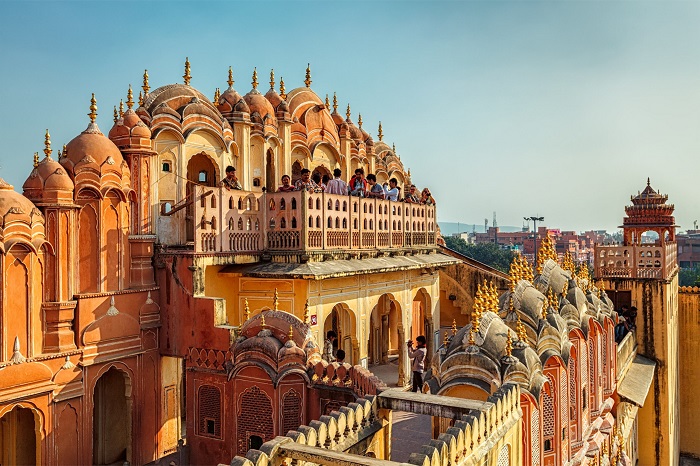The best of traditional Indian food
Naan bread

Another simple yet essential part of an Indian meal, in the north at least, naan is a leavened flatbread that is kneaded with yoghurt and baked on the sides of a deep clay over – the tandoor that lends its name to the tandoori cuisine of North India. Thick and chewy, it is the perfect accompaniment for rich meaty dishes. Purists prefer it plain, though you can also bake it with garlic or with coconut and almonds (peshwari).
Kaju barfi

Indian sweets can be very sweet indeed, and only the sweetest of tooths could work their way through a box of kaju barfi. Barfi is a kind of fudge made from milk that has been boiled down and condensed, and kaju barfi are creamy white chunks of temptation, topped with silver leaf (which you eat) for good measure.
Dosas

Dosas are a South Indian staple, and you won’t travel far in Kerala or Karnataka before coming across one of these moreish crispy pancakes. Made from fermented rice batter, they come in a variety of forms, the most common of which is the masala dosa, where the pancake is stuffed with a spicy potato curry.
Dhal

So simple and yet so significant, dhal is invariably served – in one form or another – with every Indian meal. These versatile curried lentils can appear alongside a main as anything from a soupy sambar, spiked with asafoetida and tamarind, to a tarka dhal, cooked with a masala of fried garlic, onions and spices.
Biriyani

Like many of India’s most popular dishes, biriyani was brought to the Subcontinent by Muslim invaders from Central Asia and Persia. It’s a classically rich North Indian dish that marries fragrant rice, baked with saffron or turmeric and whole spices, with chunks of moist marinated meat (and often a hard-boiled egg). Pungent and hearty, and especially appetising when sealed with a crusted pastry ‘lid’ that’s cracked open at the table.
Bhajis

Even if you never eat Indian food, you’ll no doubt have tried a bhaji at some point. Bhaji is just the Indian name given for a vegetable dish, whether that be a side of aubergine (brinjal bhaji) or potato (aloo) or chopped onions mixed in batter with flour and spices and then deep-fried – the onion bhaji, the ubiquitous street snack that has become a staple starter in curry houses across the UK.
Thali

The beauty of a thali is its variety – and the fact that ordering one in most traditional restaurants is essentially a licence to eat as much as you want. Named for the metal tray on which it is served, a thali usually consists of an island of rice surrounded by a selection of vegetarian curries, chutneys and pickles, accompanied in the south by puris and a spicy soup known as rasam.
Chawalki kheer

This delicate North Indian rice dish is a favourite desert and a popular go-to for adding a touch of sweetness to festive occasions. Basmati rice, milk and nuts form the base; for extra flavour, saffron is added, along with cardamom and, when the kheer has thickened sufficiently, raisins. It’s hard to beat a comforting bowl of hot chawalkikheer, though the dish can also be served cold.
Golgappa

In the wide-ranging world of Indian street food, golgappa scores highly for its novelty value. Made from plain flour or semolina and fried until golden, these crispy balls (golgappa means “crisp sphere”) are traditionally filled with spiced potatoes and/or chickpeas and dipped into a bowl of water peppered with cumin, coriander and other spices. Pop it into your mouth in whole go and enjoy the hit from the spiced water, the kick from the filling and the crispiness of the gappa itself.
Goan fish-head curry

Nothing invokes memories of Goa – the soft sands, the swaying palm trees, the little shack restaurants on the beaches’ edge – quite as much as fish-head curry. The fish, usually a pomfret, a flat fish, though the exact type can vary, is marinated in onions, coconut, garlic and chilli and then cooked up into a gloriously rich soup that is both hot and sour and very, very tasty.
Raita

Something of an unsung hero in the world of accompaniments, a good raita will provide the perfect balance to a meal, its combination of curd and coriander helping cut through the heat of spicier dishes. Boondi raita, where crunchy balls of fried gram flour are added just before serving, is almost a meal in itself, and includes chat masala, for a touch of tanginess.
Vada

The doughnut-shaped vada is a classic example of a snack that shouldn’t work but does. On paper, a spicy fritter that is made out of lentils and deep fried sounds like something that shouldn’t get any further than that. But in reality it’s a very moreish little South Indian snack, and you can quite easily chomp your way through a plateful. There are numerous variations on the theme: a vada pao (or vada pav), for instance, is a vada served in a bun with chutney.
Gulab jamun

The phrase “naughty but nice” might well have been invented for gulab jamun: spongy dough balls deep fried in ghee and served in syrup. The name is derived from the Hindi word for “rose” (gulab, as the syrup is scented with rose water) and a type of berry that grows in India, a reference to the colour and size of the dough balls. Unbelievably sweet, incredibly cloying – the syrup works right through the dough – but ridiculously addictive.
Seekh kebab

A common appetizer in North India, seekh kebabs are made of spiced minced lamb (sometimes beef) that is pressed onto a skewer and then grilled, though traditionally they were cooked in the tandoor. They are delicious with a squeeze of lemon and a mint chutney. As with other kebabs, they can also be served with sauces in a griddle-fried flatbread, known as a kathi roll, a street food that originated in Kolkata.
Rogan josh

A classic Mughlai dish, rogan josh is traditionally part of Kashmiri cuisine but has spread across North India. Succulent pieces of braised lamb cooked in numerous spices, it is a medium-hot curry, the name referring either to the way it’s cooked (from the Persian for “hot oil”) or its appearance (“rogan” meaning “red”, a reference to the dried Kashmiri chillies that lend the dish its deep rich colour.
Paneer paratha

The versatile paratha, a lightly fried bread, can be stuffed with anything from fenugreek leaves to minced meat, or just served plain with a touch of jam at breakfast. But there’s something about a paneer paratha that sets it apart, the contrast between the crisp exterior and the soft cheese inside, blended with salt, chilli powder and coriander leaves. Eat it immediately, with a melting knob of butter, or add some yogurt or pickle.
Mishti doi

Mishtidoi originates from Bengal but has become a popular dessert throughout India. It is essentially thickened milk mixed with jaggery or sugar, some of which is caramelized, but the result is a deliciously balanced pudding, with sweetness and tang jostling for position on your tastebuds. The yoghurt is usually served in earthen pots, which make it even thicker and creamier.
Mysore pak

A rich dessert that originates from the state of Karnataka in South India, Mysore pak is made using gram flour, ghee (clarified butter) and sugar. Legend has it that it was dreamt up by a chef at the Mysore Palace, a man who clearly didn’t do savoury – “pak”, rather unsurprisingly, derives from the Sanskrit for “sweet”. It is popular festival treat, particularly during Diwali.
Tikka masala

Purists will argue that chicken tikka masala is not, technically, an Indian dish at all, having been created for UK domestic diners in the 1970s, who wanted some “gravy” with their dry tikka dish. But there’s no denying the dish’s impact, and having famously been voted the UK’s most popular meal, it must be doing something right. A tasty introduction to Indian cuisine for the cautious, tikka masala combines the tandoor clay oven with pan-frying, using subtle spices in a rich, creamy sauce.


